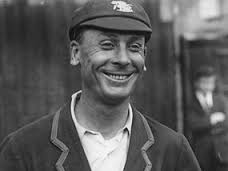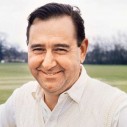197 or 199?
David Taylor |
Although the two current holders look safe for the foreseeable future, the record Test aggregates for batsmen and bowlers have changed hands a number of times over the years. In my own cricket-watching time, the runs record has been held successively by Gary Sobers, Geoff Boycott, Sunil Gavaskar, Alan Border, Brian Lara and now Sachin Tendulkar, while holders of the wickets record have included Fred Trueman, Lance Gibbs, Dennis Lillee, Ian Botham, Richard Hadlee, Kapil Dev, Courtney Walsh, Shane Warne and Muttiah Muralitharan. It’s a different story with the first-class records. With the lists dominated by English players who had the opportunity to play many more matches than their contemporaries overseas, the names at the top are carved in stone: since 1930, a little earlier in fact, the highest run-scorer has been Surrey’s Jack Hobbs, and the highest wicket-taker Wilfred Rhodes of Yorkshire.
But how many runs did Hobbs score, and how many wickets did Rhodes take? It depends where you look. When I was first getting into cricket in the mid-1970s there really was only one source of reference, and Wisden Cricketers Almanack told me that Hobbs made 61,237 runs, with 197 centuries, and Rhodes took 4,187 wickets – in addition to scoring 39,802 runs, putting him in 17th place. If the runs figures were a touch unwieldy the figures of 197 and 4187 were soon committed to memory.
But then I didn’t know about the Association of Cricket Statisticians, which had been formed just a few years earlier, and which set out at an early stage to identify each first-class match that had been played. Nowadays the ACS has its own excellent website, which you may know as cricketarchive.co.uk. And there is of course a third major source of reference. It is a fair bet that many more people each day use the records section, or refer to the players’ records, on ESPN Cricinfo, than look them up in Wisden. I must admit that despite being a yearly purchaser of the world’s longest-running sporting annual, I am one of them.
As far as I can tell the ACS and Cricinfo records agree with each other, but disagree with Wisden, not just in respect of Hobbs and Rhodes but also the Surrey man’s debonair opening partner, Herbert Sutcliffe, and the grandfather of English cricket himself, WG Grace, and other notable players besides. What has happened of course is that there is a lack of consensus as to which matches were first-class. In the case of Grace the stats men have taken runs and wickets away, in respect of matches which they have concluded ought not to have been given first-class status. With Hobbs, Rhodes and Sutcliffe they have been given extra matches, extra runs, and extra wickets. In each case these relate to matches played in Asia; Rhodes took up a coaching post in the early 1920s and played a number of matches as the ultimate ‘ringer’ – including, improbably, one for ‘Hindus and Muslims’ – while Hobbs and Sutcliffe played a number of matches for the Maharajah of Vizianagram’s XI in India and Ceylon, as it then was, in 1930-31.
The upshot of excluding and including these matches is that WG has lost eight, or possibly nine* matches, 685 runs, two centuries, and no fewer than 67 wickets, Hobbs has an extra 523 runs with two centuries, Sutcliffe an extra 532 with two centuries, and Rhodes an extra 247 runs and 17 wickets (he actually spent three winters in India in the 1920s, it’s only the 1922-23 matches which seem to be in dispute). Hobbs’ total of career centuries is thus increased from 197 to the tantalising figure of 199. It seemed to me when I was younger that he must have played on into his fifties purely to try and get those extra hundreds, though knowing what I do of him now, I’m certain that wasn’t the case. And in any case it would have surely been possible for him to play Festival matches against weak opposition, or for MCC against universities, if that was the objective. The fact is that the question of the extra two hundreds was mentioned to Hobbs during his lifetime. “Don’t include those” he insisted. “They were exhibition matches. Vizzy wanted to list our hundreds on the wall of his pavilion. We knew we’d got to get hundreds – so did the bowling side.They were not first-class in any sense.” I don’t know of Sutcliffe’s view on the matter but it seems that the word of ‘The Master’ has been good enough for Wisden ever since, if not for the bean counters of the ACS and Cricinfo.
The almanack did once feature the revised figures for WG Grace, though. It was in 1981, the first year of John Woodcock’s editorship after succeeding the long-serving Norman Preston. The first-class runs list – of batsmen who had scored 25,000 runs – had a footnote giving the totals given for Grace in previous editions – which it stated, ‘included a number of matches which cannot be regarded as first-class.’ One explanation given for removing these games was that Grace’s runs and wickets had been counted when nobody else’s were; nevertheless, there must have been outcry, because Wisden reverted to the traditional figures the following year. I suspect too that Woodcock was not consulted on the revision, and was none too pleased about it.
Clearly the game has more pressing concerns, and we are talking about a few hundred runs or a few wickets for players long since deceased. I have more time for the Grace revisionists than I do for the others, because cricket for most of his time was not organised along the same lines as in the 20th century (there was no recognised County Championship, for instance) and so the concept of a ‘first-class’ match was not then recognised. People used to talk about ‘great matches’ or ‘big cricket.’ But if Jack Hobbs didn’t consider that he was playing in a first-class match I see no reason for statisticians of later generations to disagree with him. I suppose in the end it will come down to which source of reference you are most used to, and which figures you are most used to seeing. In any event it’s not as if 197/199 or 4187/4204 are going to be overtaken. Those great cricketers will be on their respective pedestals for ever more.
(* the one match discrepancy occurs in Simon Rae’s excellent 1998 biography of Grace, in which the statistical appendix has a page devoted to ‘the disputed matches’)





Leave a comment